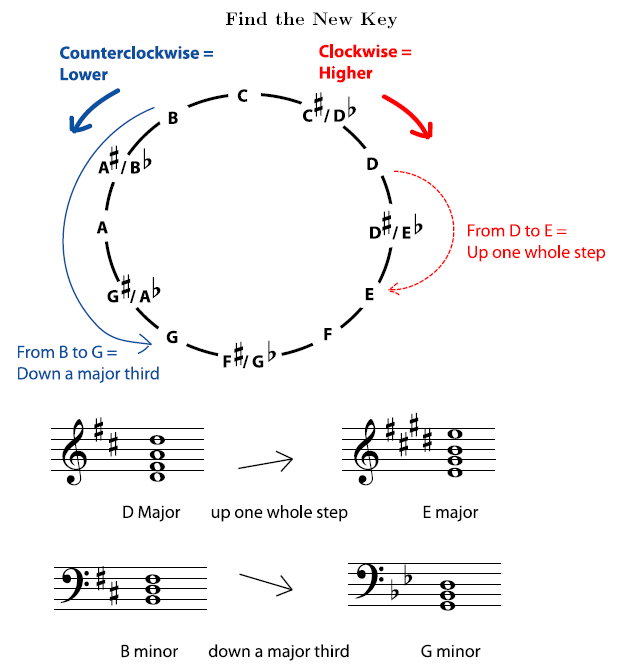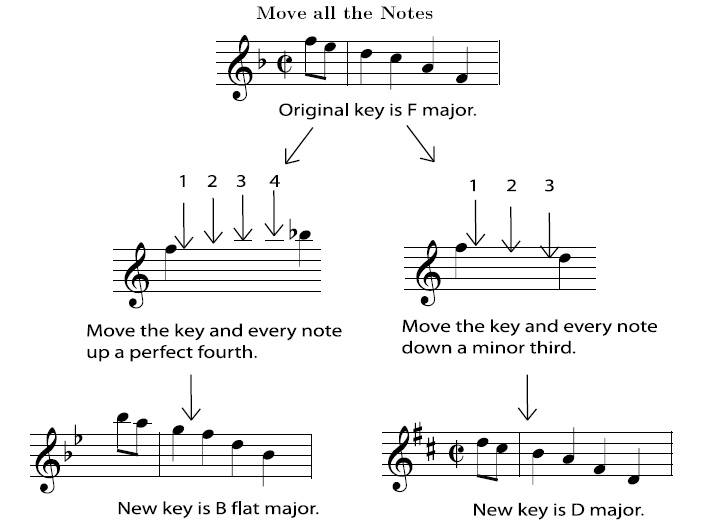If you have chosen the transposition because you want a particular key, then you should already know what key signature to use. (If you don't, see Key Signature.) If you have chosen the transposition because you wanted a particular interval (say, a whole step lower or a perfect fifth higher), then the key changes by the same interval. For example, if you want to transpose a piece in D major up one whole step, the key also moves up one whole step, to E major.
Transposing a piece in B minor down a major third (Major and Minor Intervals) will move the key signature down a major third to G minor. For more information on and practice identifying intervals, see Interval. For further information on how moving music up or down changes the key signature, see The Circle of Fifths.


- 2853 reads






